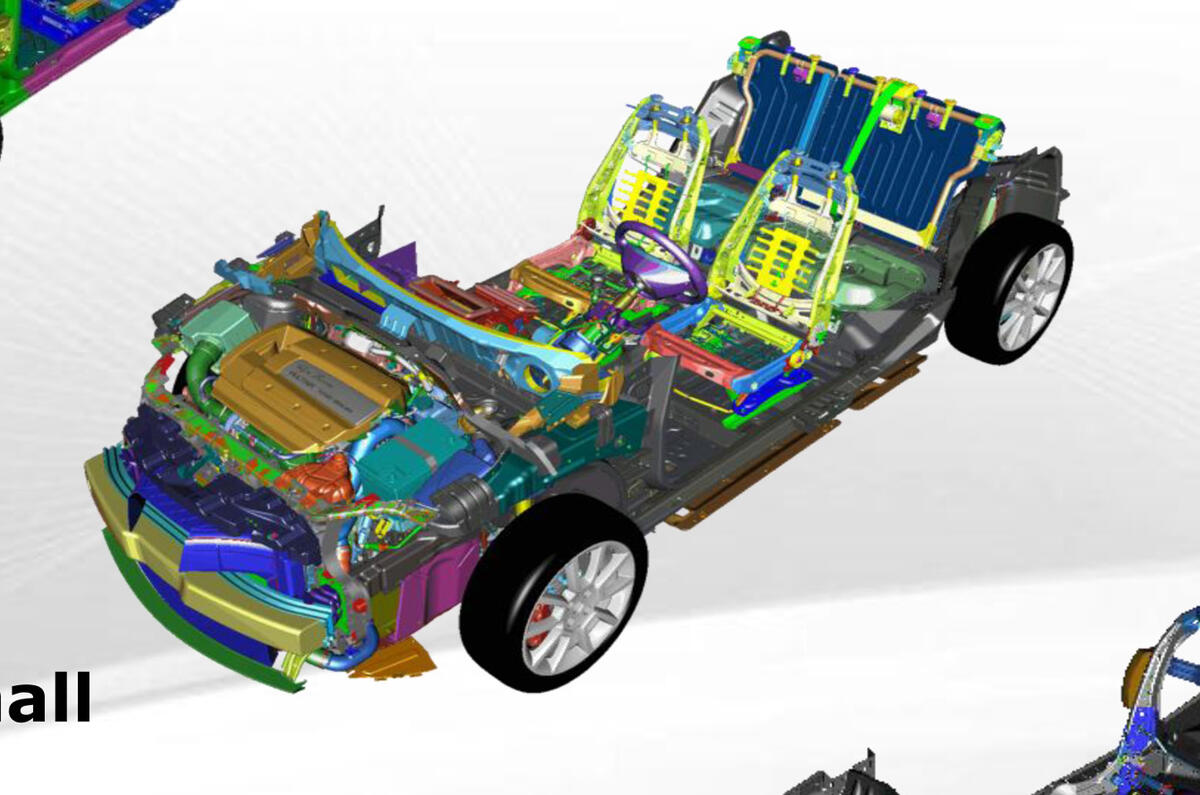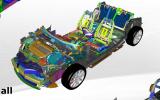Fiat is planning to rely heavily on a range of new, modular platforms to support a range revamp that could take total group production to 800,000 units per year by 2014.
The firm believes that by making hi-tech, flexible architectures it can support the short-term goals of replacing several key models and giving US partner Chrysler’s line-up a badly needed shot in the arm without having to invest in bespoke platforms.
See pictures of Fiat's mini, small and compact global modular architecture
Fiat’s own analysis documents state that in 2006 it produced 32 models on a total of 19 architectures. It says that it will be producing 38 models on just 11 platforms by the end of this year - and predicts that by 2014 it will make the same number but on only five platforms. Fiat estimates that these efficiency gains will enable it to increase total production from 205,000 cars this year to 800,000.
At the heart of the plans are three modular architectures that give Fiat Group scope to create cars as small as the Panda and 500, and as large as US-market Chryslers.
Mini global modular architecture
Fiat’s smallest platform has been a success for the firm, underpinning the big-selling Panda and the reborn 500.
It is also used by Ford, as the basis of the Ka. Today around 500,000 cars per year are based on the Mini platform, and it is due a major overhaul that will see it also prepared for sale in North American and other global markets.
Fiat estimates that production of cars based on the Mini Global Architecture will leap to around 900,000 per year by 2012, and 1.2m by 2014. Only a couple of hundred thousand of these will be Chrysler-badged vehicles.
Small global modular architecture
The new Small Global Architecture is thought to be a development of the current Punto platform.
It is being re-engineered to take into account US crash regs, as well as being flexible enough to meet the demands of low-cost manufacturing in South America, where the platform is thought to underpin the just-unveiled Fiat Uno.
This year the platform will support around 500,000 new cars, rising to around 800,000 in 2012 and 1.1 million in 2014. Only 150,000 or so of these vehicles will be Chrysler-badged by 2014.
Compact global modular architecture
An all-new front-drive platform that has just been launched under the Alfa Giulietta, this is probably the most important architecture of the lot.
It will replace the structure that underpins today’s Fiat Bravo and Lancia Delta, and the Alfa 156-derived chassis of the Alfa 147 and GT, as well as the modern but heavy Premium platform under the Alfa 159, Brera and Spider models.











Join the debate
Add your comment
Re: Fiat's radical platform plan
Is it just to me the numbers in the article don't add up? First, the ambition for Fiat Group is stated as being 800 000 units a year, then it is stated that more than one of the current platforms surpass 500 000 units this year - and they are all supposed to go on into the millions?
Re: Fiat's radical platform plan
Oh this is so radical I think VW and GM have been doing it for at least 20 years now???
Re: Fiat's radical platform plan
As in, the Tipo Tempra 155 Delta2 Dedra. They were a new platform.
Derivatives (but heavily modified) of this new platform are in the:
Eurovan1; Eurovan2, Fiat Coupé, 145/146, GTV/Spider/156/147/GT
The Ritmo/Regata only underpins the SEAT Ronda/Malaga, and in heavily revised form, the Delta1/Prisma.